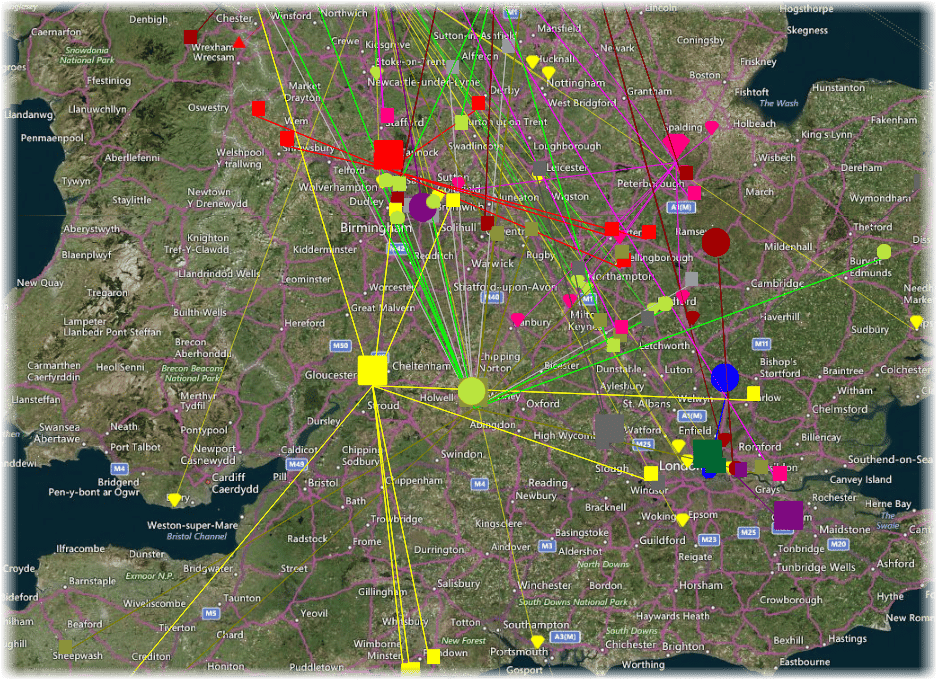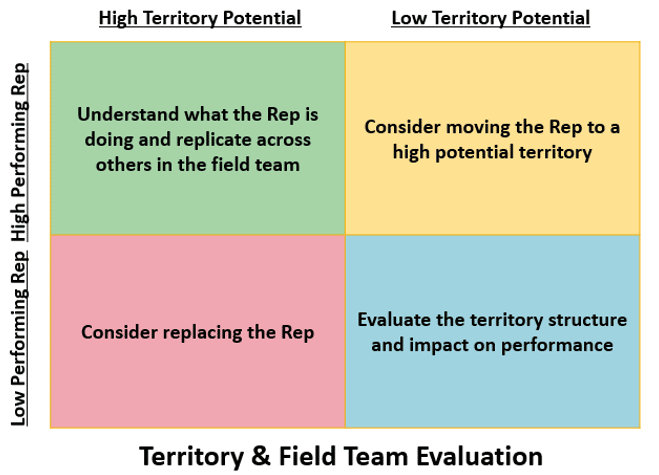Using HR and company data to plan field team headcount
Getting a field team headcount right – with the right people in the right locations – can be extraordinarily difficult. Consolidating HR and your company data can give a better outcome.
An organisation’s strategic objectives need to be considered along with the skills, compensation plans and logistics of the field team. But most importantly, an accurate workload needs to be established to meet company goals. Far too often though, workload calculations are unclear, based on wrong or out-of-date information and assumptions or simply decided by “gut feel”.

This leads to a lack of clarity as to what daily/weekly/monthly activities are required of people which makes it impossible to accurately calculate the correct field team headcount. Obviously this is a problem for the HR Dept, particularly if they’ve been tasked with reducing staff costs or increasing customer service levels in the field.
However, this issue can be overcome by joining company and HR data and applying spatial analytics to deliver the bigger picture of what’s happening on the ground and identify improvements to feed into headcount calculations. For example, the map below shows distances of staff to the accounts they serve and where they encroach on someone else’s territory.

From an HR perspective, spatial analytics will also show gaps in coverage, identifying the best geographic areas to recruit. Or conversely, identify where the ratio of people to workload is too high in which case the team may need re-positioning geographically, refocusing on different products or a changed headcount. This could be taken a stage further if the potential value of each customer is incorporated in the analytics process – some customers, particularly in more remote areas, may not warrant a visit and could be served by other channels such as telesales if this is an option.
What Factors Impact the Workload Calculation?
These are just some of the things to be considered when planning field team headcount and locations:
- Any specialist skills needed to sell specific products or service different types of customer
- Hours available for face to face meetings – working hours less travel time, holidays, sickness, training days, etc.
- Sales channels for different customer value segments – how many need a visit, how many could be serviced by telesales or email
- Customer, outlet and prospect locations
- Industry/company specific data and regulatory factors…
The above information needs to be consolidated and analysed to produce an accurate projected workload by account in terms of visits, telephone calls, travel time, etc. The current or projected team size can then be overlaid and you can understand if you have the right number of people, too many or not enough – and in the right place.
And because the sales data has been factored into the equation, a company will be able to direct its field team in a much more focused fashion – are more hunters needed (to recruit new customers) or more farmers (to service existing accounts) or people able to do both – who may need retraining. Knowing precisely the requirements of the different roles in each geographic area means HR can recruit with confidence knowing exactly what skills are needed to lead to a successful hire.
Evaluating Options
If you’re undertaking a major restructure or merger of field teams, there is never a 100% perfect solution when it comes to getting the field team headcount and territory realignment correct. Trade-offs generally have to be made to arrive at an acceptable “cost-to-serve” and retain customers. To fully understand the options, spatial modelling can be applied to create multiple field team scenarios for comparison, varying the headcount, number of territories, customer sales channels and so on. The impact on revenue of the different scenarios can be calculated and the impact on individual team members and risk to the business assessed objectively.
This approach will support good decision making in your organisation leading to better outcomes in terms of staff retention, more effective use of field team time and higher revenues. And if consultations with the field team are on your agenda, the rationale behind any changes and the benefits to the team can be explained in detail to help mitigate disruption.
Is the playing field level? Are your star performers really the stars?
If you’re adjusting field team headcount, you need accurate performance figures for your existing people. Spatial analytics will let you objectively assess and compare individual performances in relation to the sales potential in a territory.

Purely assessing sales figures may not give the full picture when comparing performance. To get a complete picture, the number, value and locations of customers and prospects in each territory need to be factored in. This will identify differences in individual workloads – some people may travel much further than others in the course of a month limiting customer facing time, some may recruit many more new customers than others whilst some rely on sales from a few existing big customers to meet their targets. Average performers are often found to be better than thought when market potential and travel time are taken into account.
So whether you’re carrying out performance reviews, recruiting for a single field team member or having to deal with the challenges of a full scale team restructure or merger, the impact of spatial analytics can only be positive – more successful hires, improved territory realignment, increased R.O.I. for the field team and increased revenue for the company.
Tech4T are experts in data and spatial analytics, specialising in field force optimisation, customer targeting and location analysis.
Click here for more information on improving field team performance
